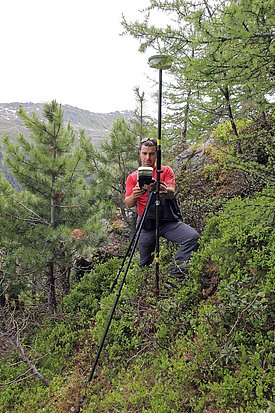
Forest lines ¶
Forest lines are among the most striking transitions between habitats. But changes in land use and also climate change are causing them to shift in many places. We are investigating what this means for protection against natural hazards and other environmental benefits of mountain regions.
Upper forest lines are transitional areas between subalpine forests and alpine grasslands. On a large scale, upper tree lines and forest lines above all serve as heat boundaries. Only when average temperatures of at least 5 to 7°C prevail during the growing season can the metabolic processes that successfully control tree growth take place. If the growing season is too short or too cold, the trees do not invest enough energy in stem growth. On a small scale, in addition to being affected by temperature, actual land use and changes in land use, tree survival and growth are also influenced by snow movements, frosts in early summer, wind, snowpack, desiccation and competing vegetation.
Using long-term observations and ecological experiments, we are exploring how the upper forest line shifts under the influence of various factors and what impact these changes have on protection against natural hazards and other environmental benefits.
